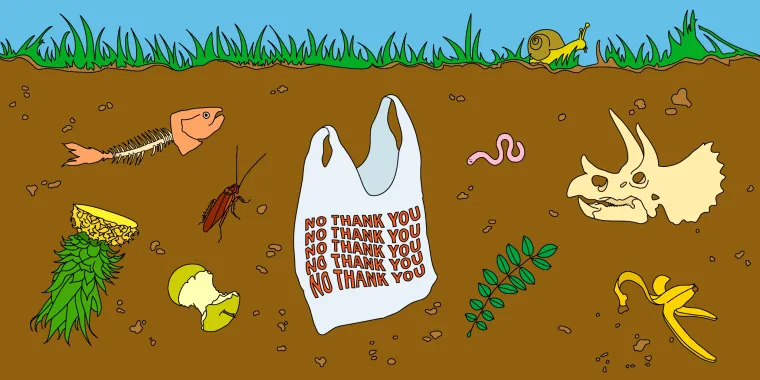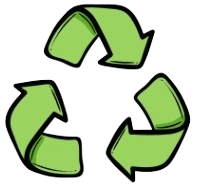* This article was last updated in and is based on extensive research from reputable sources, including scientific studies, government reports, and environmental organizations. For further reading and verification, refer to the sources list.
Introduction
The escalating global waste challenge presents significant environmental ramifications, particularly concerning the capacity of landfills and the generation of potent greenhouse gases such as methane[1].
As the volume of discarded materials continues to grow, the need for sustainable waste management solutions becomes increasingly critical. Biodegradable waste, characterized by its natural decomposition through the action of microorganisms, offers a promising avenue for mitigating the environmental burden associated with traditional waste disposal[2].
This article aims to provide a comprehensive overview of biodegradable waste, encompassing its definition, key characteristics, common examples found in households, broader categories, the essential conditions for its degradation, appropriate disposal methods, and prevalent misconceptions surrounding its classification.
Defining Biodegradable Waste
Biodegradable waste fundamentally refers to any organic matter present in waste that can be broken down into simpler, non-toxic substances by microorganisms and other living organisms through natural processes such as composting, aerobic digestion, or anaerobic digestion[2:1].
This decomposition process results in end products like carbon dioxide, water, methane, compost, and humus[2:2].
Key Characteristics of Biodegradable Waste
Several key characteristics define biodegradable waste:
- It is primarily of organic origin, meaning it is derived from plant or animal sources[2:3].
- Biodegradable waste exhibits susceptibility to microbial decomposition, indicating its ability to be broken down by a diverse range of microorganisms, including bacteria and fungi[2:4].
- The decomposition process leads to a breakdown into natural elements, effectively returning the constituent elements of the waste back into the environment[2:5].
- Decomposition rates vary significantly depending on the type of material and the prevailing environmental conditions, ranging from days to years[3].
- Biodegradable waste presents a potential for valorization, meaning it can be utilized for beneficial purposes such as composting to produce soil amendments, anaerobic digestion to generate biogas for energy, or other processes to create biofuels and bioplastics[1:1].
Want to better understand the difference between biodegradable and compostable waste? Read the full explanation here.
Common Examples of Biodegradable Waste
Many common household items fall under the classification of biodegradable waste.
- Food scraps represent a significant portion and include fruits and vegetable peels, cores, and leftovers[2:6]. While composting guidelines may vary, meat, fish, and bones[4] as well as dairy products[4:1] are also biodegradable, though they require specific conditions for proper decomposition and may not be suitable for all home composting systems[5]. Eggs and eggshells are readily biodegradable and beneficial for compost due to their calcium content[5:1]. Cooked starches like pasta, beans, and rice[6] and bread and cereal[6:1] are generally biodegradable. Most nuts and their shells, excluding walnut shells which can be toxic to plants, are also biodegradable[7]. Coffee grounds and paper filters are excellent additions to compost due to their nitrogen content[5:2], as are paper tea bags, provided they do not contain plastic[5:3].
- Yard waste constitutes another significant category, including grass clippings[8], leaves[8:1], plant stalks and twigs (in small pieces)[5:4], flowers and dead plants (if not diseased or pest-infested)[5:5], and weeds (before they go to seed)[5:6].
- Paper and cardboard products that are non-glossy and uncoated are also biodegradable, such as newspapers[9], cardboard (without wax, tape, or glue)[5:7], paper towels and napkins (if not heavily soiled with chemicals or grease)[8:2], paper egg cartons[5:8], shredded non-glossy paper[5:9], paper bags (non-plastic lined)[9:1], and uncoated paper plates[6:2].
- Certain natural textiles like 100% cotton[3:1], wool[10], linen[10:1], hemp[10:2], and silk[11] are also biodegradable.
- Other biodegradable household items include untreated wood (sawdust, wood chips, small branches)[8:3], cork[3:2], bamboo[3:3], natural sponges, hair and nail clippings[6:3], pet waste from herbivores[5:10], and natural soaps[6:4].
Curious how long biodegradable trash actually takes to decompose? Find the detailed breakdown here.
Broader Categories of Biodegradable Materials
Beyond specific household items, biodegradable materials can be broadly categorized.
- Organic waste encompasses any biodegradable material originating from plant or animal sources[2:7]. This includes food waste, yard waste (often referred to as green waste[1:2]), agricultural waste like crop residues and manure[1:3], and certain industrial wastes from food processing[1:4].
- Paper and cardboard form another category, with their biodegradability largely dependent on the absence of non-degradable coatings and additives[2:8].
- Natural textiles, such as cotton, wool, linen, hemp, and silk, are inherently biodegradable due to their natural fiber composition[3:4].
- Finally, biodegradable plastics are engineered to decompose, including bio-based plastics derived from renewable resources like corn starch (e.g., PLA) and petroleum-based biodegradable plastics (e.g., PCL)[2:9]. It is crucial to distinguish these from oxo-degradable plastics, which are conventional plastics with additives that only cause fragmentation into microplastics, not true biodegradation[12].
Essential Conditions for Biodegradation
Effective biodegradation relies on several essential conditions:
- The presence of microorganisms, including bacteria and fungi, is paramount as they are the primary agents of decomposition[2:10].
- Adequate moisture levels are also critical to support microbial activity and facilitate the hydrolysis of organic materials[3:5].
- The availability of oxygen influences the type of biodegradation, with aerobic processes (in the presence of oxygen) yielding carbon dioxide and water, while anaerobic processes (without oxygen) produce methane[2:11].
- Temperature plays a significant role in regulating the rate of microbial activity and enzymatic reactions, with optimal ranges varying for different microorganisms[13].
- The pH level of the environment can also impact microbial activity[14].
- Finally, sunlight, specifically UV radiation, can assist in the breakdown of certain biodegradable plastics through photo-oxidation[13:1].
Explore how biodegradable trash helps the planet. Read about its environmental benefits.
Biodegradable vs. Compostable vs. Degradable
The terms biodegradable, compostable, and degradable are often used interchangeably, but they possess distinct meanings. Biodegradable broadly describes the ability of a material to break down naturally over time through biological processes, primarily by microorganisms[13:2].
Compostable is a more specific term, referring to materials that break down in a controlled composting environment with specific conditions to produce nutrient-rich compost within a defined timeframe[2:12]. Degradable is the most general term, indicating that a material will break down over time through various processes, which may or may not be biological, and does not necessarily imply environmental safety[3:6].
The following table summarizes these key differences:
| Feature | Biodegradable | Compostable | Degradable |
|---|---|---|---|
| Definition | Breaks down naturally by biological processes | Breaks down in a composting environment to form compost | Breaks down over time through various processes |
| Conditions | Natural environment | Specific composting conditions required | Varies depending on the type of degradation |
| Timeframe | Can vary from weeks to years | Typically faster, within months in a compost facility | Can vary significantly, may be very long |
| End Product | Carbon dioxide, water, methane, biomass | Nutrient-rich compost | Varies, may include harmful residues |
| Specificity | Broad term | More specific, often with certification standards | Broadest and least specific term |
| Environmental Impact | Generally positive, but depends on timeframe | Intended to be beneficial for soil | Can be positive or negative depending on the process |
Discover how biodegradable trash breaks down compared to regular waste. Read the comparison here.
Proper Disposal Methods for Biodegradable Waste
Proper disposal of biodegradable waste is crucial to maximize its environmental benefits. Composting is an effective method, both at home and in industrial facilities, to decompose organic waste into a valuable soil amendment[2:13].
Suitable materials include food scraps, yard waste, and certain paper products, while items like diseased plants, treated wood, and meat and dairy (in home composting) should be avoided[5:11]. Anaerobic digestion is another important method where microorganisms break down organic waste in the absence of oxygen, producing biogas that can be used for energy[2:14].
The solid residue from this process can also serve as a soil amendment[2:15]. Other methods like vermicomposting, using worms to decompose waste, are also effective for certain types of biodegradable waste[5:12].
Common Misconceptions About Biodegradable Waste
Several items are often mistakenly considered biodegradable. While some plastics are marketed as "biodegradable," many, such as oxo-degradable plastics, only fragment into microplastics[2:16]. Even bioplastics like PLA often require specific industrial composting conditions[15].
Glossy or coated paper, found in magazines and some packaging, has non-biodegradable coatings that prevent decomposition[9:2]. Items containing synthetic materials, even if blended with natural fibers, will not fully biodegrade[10:3].
Treated or painted wood contains chemicals that inhibit biodegradation and can contaminate compost[16]. Produce stickers are typically made of plastic and are not biodegradable[5:13]. Dryer lint often contains synthetic fibers and is therefore not fully biodegradable[5:14].
Want the full picture on biodegradable trash? Learn about its types, benefits, and challenges.
Conclusion
In conclusion, understanding what constitutes biodegradable waste is fundamental to achieving effective waste management and promoting environmental sustainability. Recognizing the key categories of biodegradable materials, the necessary conditions for their decomposition, and the appropriate disposal methods are crucial steps.
The distinction between biodegradable, compostable, and degradable materials is essential for making informed choices and avoiding misconceptions. Continued efforts in research, innovation, and public education are vital to further optimize the management of biodegradable waste and transition towards a more sustainable future.
References
Wikipedia. "Biodegradable waste."(https://en.wikipedia.org/wiki/Biodegradable_waste) ↩︎ ↩︎ ↩︎ ↩︎ ↩︎
European Commission. "Biodegradable waste." https://environment.ec.europa.eu/topics/waste-and-recycling/biodegradable-waste_en ↩︎ ↩︎ ↩︎ ↩︎ ↩︎ ↩︎ ↩︎ ↩︎ ↩︎ ↩︎ ↩︎ ↩︎ ↩︎ ↩︎ ↩︎ ↩︎ ↩︎
AZoM. "What are Biodegradable Materials?" https://www.azom.com/article.aspx?ArticleID=24288 ↩︎ ↩︎ ↩︎ ↩︎ ↩︎ ↩︎ ↩︎
Junk King. "Yard Waste And Other Organic Waste: Why Recycle." https://www.junk-king.com/blog/article/yard-waste-and-other-organic-waste-why-recycle ↩︎ ↩︎
Anoka County, MN. "Organics/Food Scraps Recycling."(https://www.anokacountymn.gov/4408/Organics-Food-Scraps-Recycling) ↩︎ ↩︎ ↩︎ ↩︎ ↩︎ ↩︎ ↩︎ ↩︎ ↩︎ ↩︎ ↩︎ ↩︎ ↩︎ ↩︎ ↩︎
Cornell Waste Management Institute. "Yard Waste Management." https://cwmi.css.cornell.edu/yardwastemanual.pdf ↩︎ ↩︎ ↩︎ ↩︎ ↩︎
All American Waste. "Food Scraps." https://www.allamericanwaste.com/food-scraps ↩︎
BYJU'S. "Biodegradable and Non-biodegradable." https://byjus.com/chemistry/biodegradable-and-non-biodegradable/ ↩︎ ↩︎ ↩︎ ↩︎
Renouvo.net. "Biodegradable Products." https://renouvo.net/biomass-materials/biodegradable-products/ ↩︎ ↩︎ ↩︎
US EPA. "Composting at Home." https://www.epa.gov/recycle/composting-home ↩︎ ↩︎ ↩︎ ↩︎
Thermogard. "Compostable, Recyclable, or Biodegradable Packaging—What's the Best Option?" https://blog.thermogard.com/compostable-recyclable-or-biodegradable-packaging-whats-the-best-option ↩︎
Close the Loop. "End of Life." https://www.close-the-loop.be/en/phase/3/end-of-life ↩︎
RespirTek. "What is Biodegradability?" https://www.respirtek.com/blog/what-is-biodegradability/ ↩︎ ↩︎ ↩︎
GeeksforGeeks. "Biodegradable and Non-biodegradable." https://www.geeksforgeeks.org/biodegradable-and-non-biodegradable/ ↩︎
EcoFreek. "Is Paper Biodegradable?" https://ecofreek.com/biodegradable/is-paper-biodegradable/ ↩︎
Going Zero Waste. "What is Compostable? 125+ Household Items You Can Compost." https://www.goingzerowaste.com/blog/what-is-compostable-125-household-items-you-can-compost/ ↩︎


